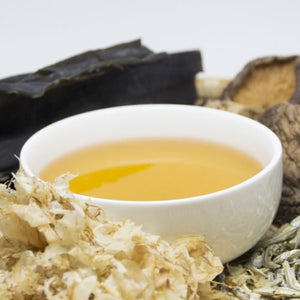![[Wholesale 20pc] Kaneso Dashi Stock Packets 10g x 30 Packs - Salt-Free, MSG-Free, Additives-Free, 100% Made in Japan](http://thejapanstore.jp/cdn/shop/files/a2938_00_en_wholesale_800x.jpg?v=1718875551)
[Wholesale 20pc] Kaneso Dashi Stock Packets 10g x 30 Packs - Salt-Free, MSG-Free, Additives-Free, 100% Made in Japan
In stock
Product Details
| Product Details | |
|---|---|
| Product Name | Kaneso Dashi Stock Packets (Bonito Dashi) |
| MOQ | 20pc Price is negotiable for bigger quantities. Please contact us for more information. |
| Ingredients | Dried bonito, dried mackerel, dried sardines, kombu kelp, shiitake mushrooms (All 100% Made In Japan) |
| Expiry Date | 1 year after the manufacture date |
| Quantity | 300g (10g x 30 Packs) × 20pc |
| Gross Weight | 8kg |
| Storing Guide | Keep at room temperature, away from sunlight and high humidity |

Wholesale Dashi Stock Packets
This product is the wholesale bulk item containing 20pc of Kaneso Dashi Stock Packets 10g x 30 Packs. If you want to purchase the single item version, you can go to the product page by clicking here.
This is a preorder item, therefore it might take more time to prepare than regular ready-stock orders. Thank you for your understanding.
Japanese additives-free dashi stock packet
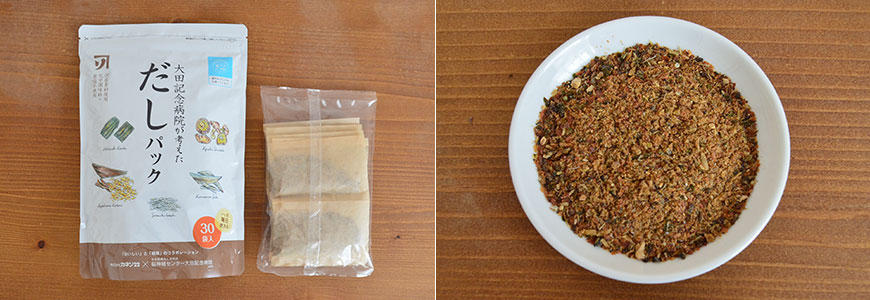
Only Japan’s domestic ingredients are used for this product, and no salt or chemical seasonings are added. This is a packet type and can be easily used for everyday cooking.
Jointly developed by Kaneso 22 and Ota Memorial Hospital Neurology Center. A dashi pack that makes it easy to get a full-fledged dashi stock even on busy days.
By making the umami of the dashi stock, you can reduce the amount of salt and soy sauce used. We use safe domestic ingredients and do not add seasonings such as salt, sugar, and chemical seasonings. Contains 30 bags that can be used every day for a month.
- 100% Ingredients Made In Japan:
- ・Katsuobushi (Dried Bonito) from Kagoshima Prefecture
- ・Dried Iwashi Sardines from Seto Inland Sea
- ・Sababushi (Dried Mackerel) from Kumamoto Prefecture
- ・Kombu Kelp from Hokkaido
- ・Shiitake Mushrooms from Kyushuu
Since no salt or chemical seasoning is added, it can be safely used by people who are refraining from salt, people who want to make baby food, and people who want to avoid unhealthy chemical seasonings.
How To Use The Dashi Packets
Just put water and dashi stock packets (without taking the ingredients out of the packets) in a pot and simmer for a few minutes. You can easily get a flavorful soup stock with the peace of mind that only natural materials can offer.
* Be sure to boil it because the taste is not enough when it is only steeped.
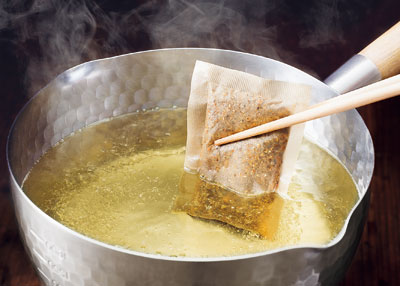
Commitment to dashi stock
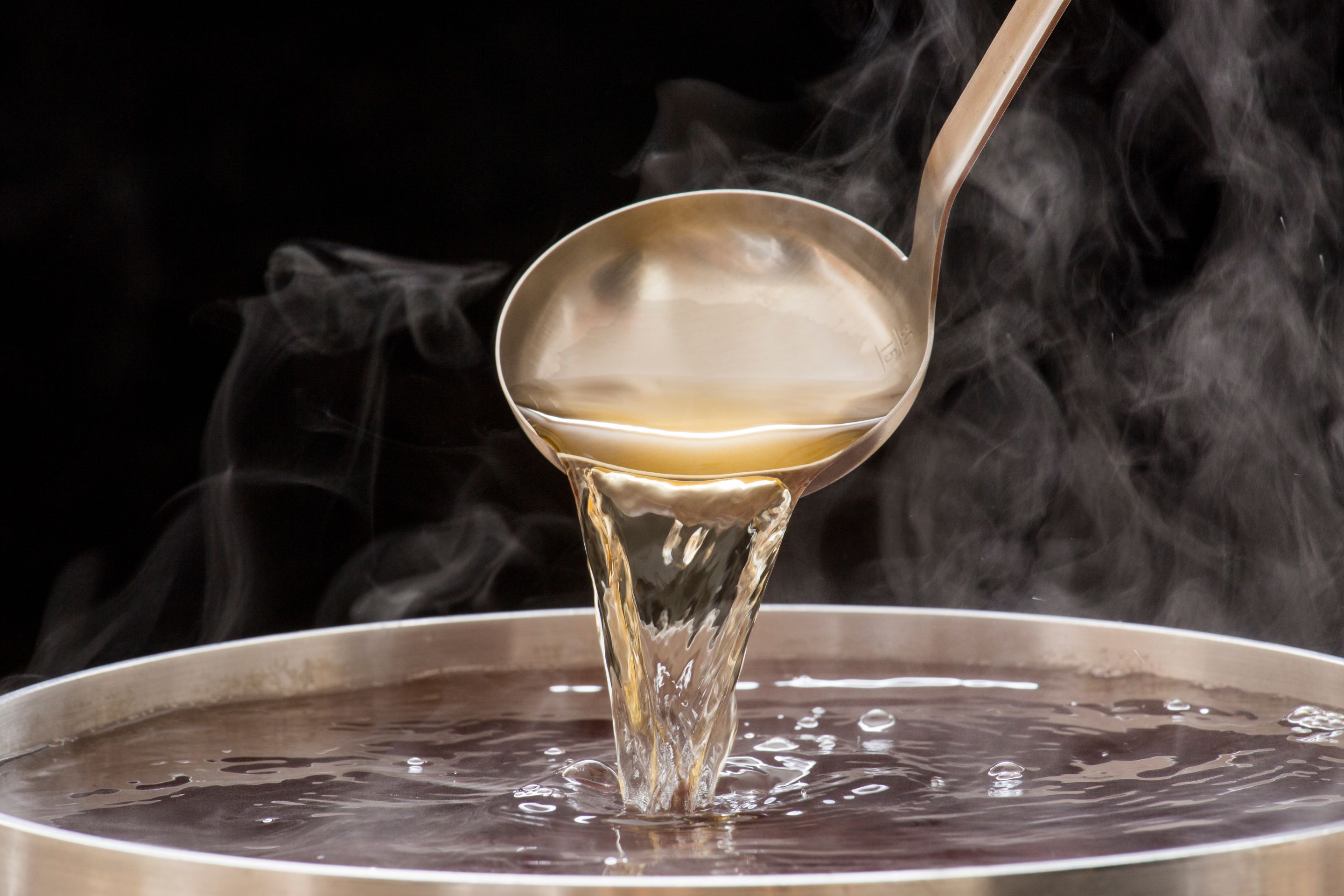
The deliciousness of Japanese food always begins with dashi. We want to pass on the essence of Japanese food that the Japanese have built up to future generations and leave it to them. With that in mind, we have been moving forward with dashi for over 100 years. In today's changing times, our awareness of life and food continues to change.
Things that change, things that don't change. Facing dashi, through dashi, we will innovate new ideas to the times and to the dining table.
We don't think our work change 100 years ago nor will it change 100 years later. We carefully examine the production, stick to the manufacturing method, and make reliable products with our own route and technology. We hope we can create products that are easier to use according to the needs of the times. Our feelings for dashi are always hot and never cold.
The History of Kaneso 22
Kaneso is 105 years old
The founder Toyoda family began to settle in Fukuyama when Katsushige Mizuno opened Fukuyama and accompanied him from Kuwana in the 5th year of Genna (1619). Since that time, the manufacturer has been using the name Kuwanaya for our business for generations.
Sohei Toyoda started a seafood wholesaler in Shimoyoya-cho, Fukuyama City (currently Takaramachi) in 1890. He took the kuwa (桑) character from the word Kuwana (桑名) and combined it with so (宗) character from his own name Sohei (宗平), and named the company Kaneso.
Meanwhile at the end of the Meiji era, Fujiwa Abe Shoten in Fukuyama City succeeded in developing "Kezuri-bushi", which is the first large-sized dried fish in Japan to make it easier to eat, and started selling it.
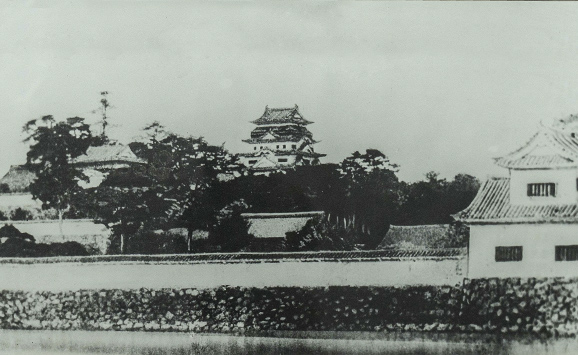
Developed the prototype of the shaving machine
In the 5th year of the Taisho era, the second generation Toyoda Denshichi also started making bonito flakes. The shaving machine at that time was not perfect, but after five years of research, we devised a machine that can shave various fish species, and this is the prototype of the shaving machine that is still in use today.
Production has grown steadily since the completion of the Toyoda-style bonito flakes, and sales channels have expanded from rural areas to the Kansai region. Kezuribushi (a type of bonito flake) has become more and more popular because of its deliciousness and convenience. Productivity has increased and sales volume has increased sharply. Around 1930, we had 20 cutting machines and started construction plans for refrigerators necessary for storing raw materials. Although it was burnt down in the war damage of 1945, the factory was planned to be reconstructed from 1946, and the factory was rebuilt and resumed operations in the following 22 years.
Established Toyoda Fisheries Processing Co., Ltd. in 1949. Masaichi Toyoda was appointed as the first president.

Launched "Flavor Packets", a tea-bag type dashi stock packets
In 1962, the first tea-bag type dashi "Flavor Packets" was released in Japan. At the time of its release, it expanded its sales channels for commercial use, and after that, it was adopted by co-ops nationwide, and sales grew.
With the rapid expansion of the taste pack business in 1975, the second factory was built in the Mobira Industrial Park in Kasaoka City, Okayama Prefecture, and in 1988, the Hanakatsuo Factory was relocated to the second factory.
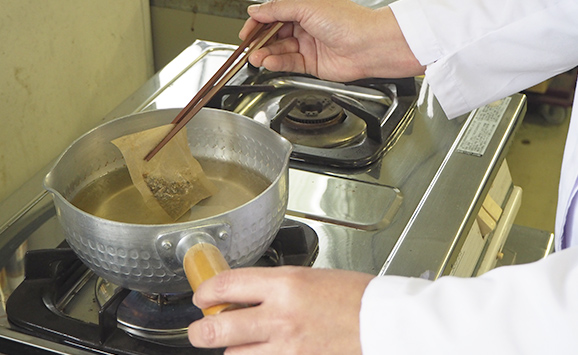
Changed the company name with the spirit of challenge to continue aiming for growth
In 1989, the new flavor packet factory was completed at the second factory, and the headquarters function was transferred from the Mifunecho head office in Fukuyama city.
In 1995, the company name was changed from "Toyoda Fisheries Processing Co., Ltd." to "Kaneso 22 Co., Ltd." The reason is that many customers associate the name of fish processing with the image of processing fresh fish, so we decided to use the traditional name "Kaneso" as a manufacturer that processes dry matter raw materials. In addition, "22" refers to the 22nd century, and it expresses the spirit of challenge that the company will continue to aim for growth toward the next century.
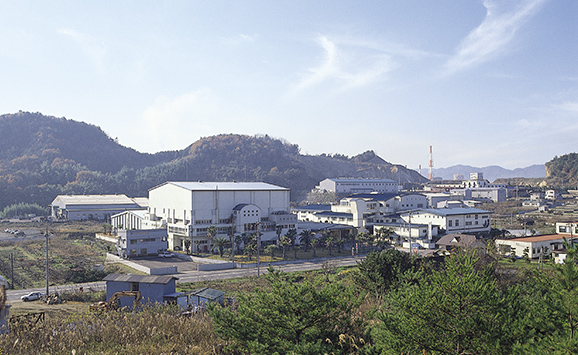
Dashi that proritizes domestic ingredients
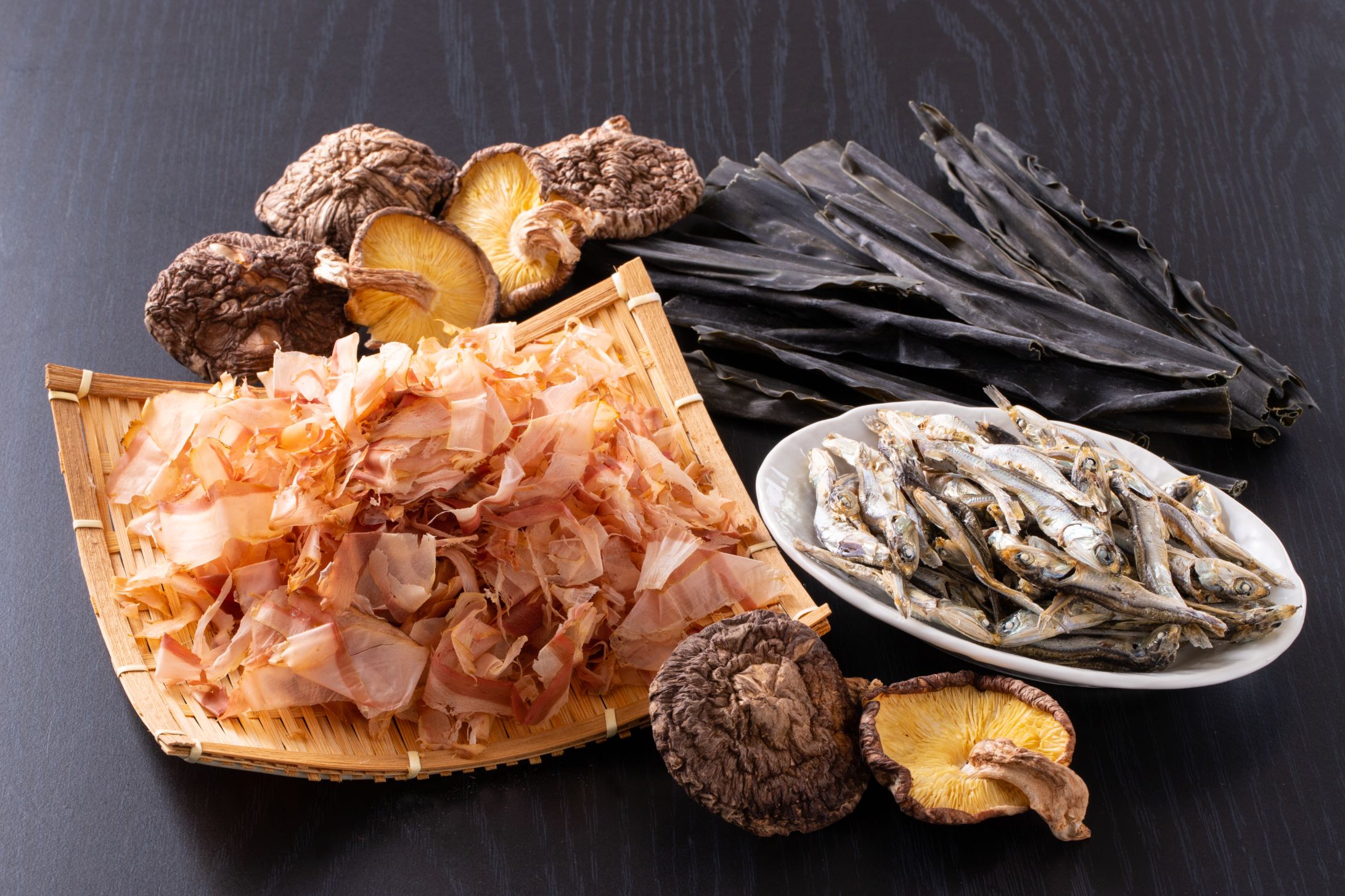
To make a good dashi, we choose good materials.
The natural umami that is drawn from high-quality materials is complex and profound, soothes the hearts of Japanese people and makes us feel happy.
With katsuobushi, dried sardines, mackerel, auxis fish, kelp, shiitake mushrooms, these traditional soup stocks are still being made using traditional methods.
Commitment to the production area
We carefully examine and select only the ingredients that are carefully manufactured and have excellent umami and fragrance, and purchase them from production areas and producers all over Japan.
With our unique storage and processing technology, we will further enhance the umami and fragrance of such precious raw materials and bring them to the market as finished products.
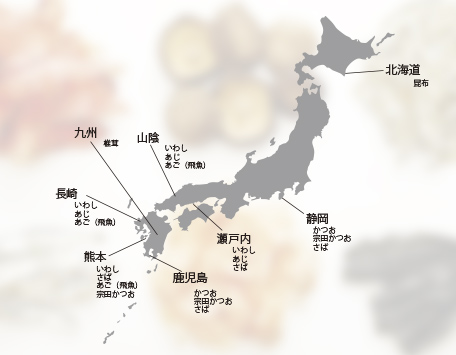
Safe and secure hygiene management
Hygiene efforts before entering the processing plant
We wear a special uniform and mask to enter the manufacturing area, and after wearing it, we thoroughly roll and carefully remove foreign substances from the surface of our uniform.
After that, we wash our hands, disinfect with alcohol, and take an air shower when entering the factory.
Adhesive tape is also installed at your feet to prevent foreign matter from entering the factory.

Efforts for safety and security in the factory
A metal detector is installed on each product line to prevent foreign matter from entering the product and manufacture safe products.

Efforts for safety and security in the laboratory
In the laboratory, we measure salt content, extract, and fat, and perform bacterial tests.

Find Out More About Dashi And Its Varieties
What is Dashi? Everything You Need to Know About Japanese Soup Stock
Dashi is the basic ingredient of traditional Japanese cuisine. Most Japanese recipes call for dashi, whether in soup form or in dried powder form. Usually dashi is combined with soy sauce and mirin to make the authentic Japanese taste. But, what is dashi, and what kind of ingredients are used to make it?
Why shop with KAWASHIMAYA?
- We sell only authentic and high-quality products
- 100% Made in Japan products are as listed
- Organic and non-GMO products are as listed
- All products are new and have long expiry date
- All products are handled directly from our warehouse in Tokyo, Japan
- Easy and secure payment options with CC or PayPal
- Safe and insured international shipping methods
- English and Japanese customer support by email
- Wholesale discount prices available for selected products
- Find insightful articles from KAWASHIMAYA Blog
- Get exclusive discounts for KAWASHIMAYA Newsletter subscribers
- Easy shop on KAWASHIMAYA Amazon USA

